-
Posts
409 -
Joined
-
Last visited
Content Type
Profiles
Forums
Gallery
Events
Blogs
BMT Wiki
Collections
Store
Posts posted by Deere Mack
-
-
2 hours ago, Lema Trucking said:
I am having this problem in my 2021. Its not even 2 months old and im going bat bleep crazy in this cab.
any update Deere mack?Hello, I ended up selling that truck. The air control made a huge difference but the noise was still there. It's like that with most Allison's. Have a friend that just bought a new Pete with the Allison 4700 and it does the same thing. Some are just worse than others and I've seen some that make very little to no noise. Good luck!
-
 1
1
-
-
Just now, fjh said:
Give us a Side view! How thick?
That's all the pics I have, its at the shop. I'll get a few more tomorrow if we don't figure it out.
-
20 minutes ago, fjh said:
Bro I think turbo washer now I know the size seen this before turbo gave out at som point .
you have only had this truck for a year do you have history on the unit bet it had a turbo failure!
If you zoom in on it, it doesn't look like it ever was a full circle. No history at all. The history I was given was mainly on suspension and dump cylinder stuff and it was all lies
-
-
56 minutes ago, Mack Technician said:
#4. The rocker arms have spring washers preloading them from lateral travel. It’s one of the 6 c-clips mixed in with those sprung rocker shaft washers.
#5. A broken section of the variable thickness washer/shims used to load and adjust mounting depth of the oil pump spring retaining cap for the relief valve.
No. 1 in the pic is the c-clip mentioned in item #4
-
7 minutes ago, Mack Technician said:
Not sure if some of the idle/acc gears could drop a failed-split machined washer?
If it wasn’t any of those I’d run it and (if it helps you sleep better) assume it’s compressor goods.
ha!, I've learned not to loose sleep with this beast. The centri max filter inserts are brass, I think.
-
5 minutes ago, Mack Technician said:
#4. The rocker arms have spring washers preloading them from lateral travel. It’s one of the 6 c-clips mixed in with those sprung rocker shaft washers.
#5. A broken section of the variable thickness washer/shims used to load and adjust mounting depth of the oil pump spring retaining cap for the relief valve.
#4 sounds interesting. I'd love to see a pic of those c clips because it doesn't look like a washer to me. Valve lash did seem fine.
-
1 hour ago, fjh said:
Eup cap? Doing retainer maybe don’t no how it could get out of the lifter thou?
Just about to small for that, if it was a circle it wouldn't be much bigger than a nickle. The valve lash and everything up top looked good.
-
1 hour ago, Mack Technician said:
How big is it if measured end to end? 🧲 magnetic? Are the leading edges forged or sheared off, IOW- is it built circular via machining, or circular by catastrophic coincidence? Are you still running a stock, emissions legal, AI? Did you explode some turbos in this unit, Fred’s theory is solid, anything can happen when things start coming apart at 40K RPM. Like the late, great, Joe Diffie said....”when your spinning ‘round, things come undone”(welcome to Earth 🌍 third rock from the sun). Usually it’s a shaft shard going down the southbound turbo tube.
No engine problems since I've had it, almost a year. I don't have the piece in front of me but if it was full circle it would be about the size of a nickle and it is magnetic, it was stuck to the drain plug. one edge seems to be sheered the other doesn't seem to be. From the pic it doesn't really seem round at all more like a hook. One side flat the other looks machined/cupped and the inside has a groove machined part of the way.
-
It wasn't anything from the top side. We had originally thought it might be a spring cap or part of the spring but everything looks good, plus he said it was to small for anything like that. He's going to drop the oil pan to take a look.
It almost looks like the end of a hook. The bevel on the inside doesn't look to be full circle.
-
I appreciate everyone chiming in, this one has been a booger to figure out and turns out it might have been a hidden broke leaf spring. I checked the leafs many time looking for a brake or crack and never seen anything. Had to get on the brakes the other day and felt some movement so I inspected it when i got back and it was visually noticeable at this point. I haven't driven it yet to know if it fixed it. While it was at my mechanic shop went to do an oil change and found metal, so here we go again. I just made a new topic in engine and transmission. I'll let you know when I drive it.
-
Hello, I hope everyone is staying well. I've been wide open with essential dirt work. Went to change the oil today and found treasure! It looks to be part of a valve spring but I was hoping to get everyone's opinion and what not. It's at my mechanic's shop now and they're about to pull the valve covers to take a look. It's been running fine as far as I know so this is a surprise to me!
-
One thing I did notice when I had someone braking for me. The side that pulls is braking so hard that it slightly moves the air chamber and bracket. The other side did not do this. The travel is the same on both. ???
-
Slack travel is good on both. I have not swapped the tires, this could be a problem but you usually have uneven tread wear or a rough ride. My ride is smooth and tread wear is even. I'll probably do the swap just to rule it out and go ahead a re-inspect everything while the wheels are off.
-
7 hours ago, fjh said:
I could possibly be holding air in the brake chamber on the pull side!
I pulled the line, actually both and neither had air in them. Checked slack adjustment again and it's fine. Cycled the brakes several times, again everything seems to work as it should. I checked the ABS valves for leaks and sticky valves and didn't notice anything. I still have the left pull. Most of the time it pulls hard and sometimes just slightly.
-
2 hours ago, fjh said:
To add to what Has been said here ! I have seen the ABS modulators sticK and hold just a tad bit of air in the line and not through code! check this is not happening just crack the air line loose on the side its pulling to!
So your saying that little bit of extra air could be not allowing it to equalize and brake to hard on the pulling side?
-
3 hours ago, 41chevy said:
The light cycles on start up to confirm the system is functional.
Does it have self adjusting slacks? Seen issues with them going out of adjustment on their own.
It does. I've replaced one that I was suspicious of and manually adjusted both, drove re-checked and they are staying in adjustment.
-
Forgot to mention, that I have replaced the slack adjuster, it seemed to help at first but didn't last. S-cam seems fine and everything seems to working properly. Curious about the valve package up front
-
Good morning! I hope everyone is safe and well. Crazy times. My dump has an hard pull to the left when braking hard, moves steering wheel too. This started after I installed new king pins but I can not figure out why. It does have ABS, would a bad wheel sensor cause this? FYI: The ABS light is not on but it does cycle at start up.
-
19 minutes ago, Quickfarms said:
That NSN looks like it goes back to 1963 and was probably superseded but it looks like this should be the TM
https://www.liberatedmanuals.com/TM-5-4930-230-10-HR.pdf
This is the operators manual
https://www.liberatedmanuals.com/TM-10-4930-236-13-and-P.pdf
A lot of information. I'll start by removing the big plastic contraption, that I now know is the vent and look for contaminants such as sand. Thanks a million!
-
11 hours ago, 41chevy said:
My supplier sent me this from Bell Performance Fuel. here is the article
Diesel Fuel Tank Corrosion: A New Culprit
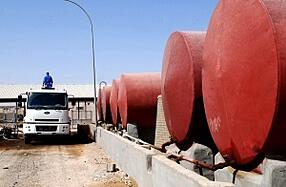 Ever since the EPA mandated the introduction of ultra-low sulfur diesel (ULSD), fueling stations and stored fuel users have been consistently reporting new cases of corrosion in their storage tanks. According to the results of the latest surveys, ethanol contamination in diesel fuel may be to blame.
Ever since the EPA mandated the introduction of ultra-low sulfur diesel (ULSD), fueling stations and stored fuel users have been consistently reporting new cases of corrosion in their storage tanks. According to the results of the latest surveys, ethanol contamination in diesel fuel may be to blame.
On June 1, 2006, the sulfur content of ULSD was reduced from 500 parts-per-million (ppm) in low sulfur diesel (LSD) to 15 ppm in ULSD. One consequence of the reduced sulfur content was the creation of a more favorable environment for microbes and bacteria to develop and thrive. This problem is in addition to other known trade-offs to ULSD like increased costs (a few cents more per gallon), 1- to 2-percent less energy, and decreased lubricity requiring the use of additives (or the addition of biodiesel). In addition, the refining process that removes the sulfur also removes high-energy aromatics, which corresponds to a 1- to 2-percent increase in fuel consumption. However, what surprised many analysts were the reported instances of accelerated corrosion in storage tanks and dispensing equipment in as little as six months.
The Findings of an Independent Study
In response to industry concerns about the unexplained accelerated corrosion, the Petroleum Equipment Institute surveyed the diesel fuel industry to identify the issues with systems storing and dispensing ULSD. Their survey revealed sporadic problems occurring in all regions of the country, regardless of the age of the equipment. As a result, the Clean Diesel Fuel Alliance (CDFA) was formed, which includes the American Petroleum Institute, Ford Motor Co., the National Association of Convenience Stores, the National Association of Truck Stop Operators, Petroleum Equipment Institute, Petroleum Marketers Association of America, Association of American Railroads, and Steel Tank Institute. The CDFA funded an independent research project by Battelle Memorial Institute to investigate corrosion in systems storing and dispensing ULSD.
The study’s conclusions were announced Sept. 5, 2012, in a 146-page report entitled, “Corrosion in Systems Storing and Dispensing Ultra Low Sulfur Diesel (ULSD), Hypotheses Investigation.” The Battelle study sampled six sites nationwide that reported accelerated corrosion in ULSD systems. Samples from the six sites were analyzed for the presence of a variety of contaminants and possible contributors. According to the report, among other contaminants, acetic acid was found at all sites from a variety of samples (fuel, water bottoms, vapor, and corrosion scrapings). In addition, the Battelle report stated that ethanol was unexpectedly identified and measured at five of the six sites, along with acetobacter microorganisms, in the majority of water bottom samples. The Battelle report hypothesized that the acetic acid is likely produced by acetobacter feeding on low levels of ethanol contamination. The report further identified this as the most likely cause of the corrosion. The report states, “The source of the ethanol is unknown; however, diesel fuel is often delivered in the same trucks as ethanol-blended gasoline. Also, some underground storage tanks for storing ULSD, which have been converted from gasoline tanks could have manifolded ventilation systems with gasoline tanks. Thus, it is possible that there be some cross contamination of ethanol into ULSD.”
However, this hypothesis has drawn criticism from the ethanol industry. It points out that, under normal, everyday storage and handling conditions, ethanol should never come into contact with diesel fuel since ethanol is a gasoline additive. It also said that none of the six sites sampled included manifolded ventilation systems.
These critics also point out that Battelle’s report drew its conclusions from a very small sample set. In addition, the Renewable Fuels Association (representing the ethanol industry) was not included in the investigation and not given an opportunity to provide feedback.
It is too early to draw definitive conclusions on how ULSD tanks are being contaminated with ethanol or why accelerated corrosion occurs in some ULSD tanks while other ULSD tanks remain largely unaffected.
What’s the Next Step For Diesel Users?
The CDFA is currently deciding whether to move forward with further research. The Battelle report recommends additional research be focused on samples from a larger, more diverse set of underground storage tanks over a period of time. The study would sample and monitor ULSD tank systems with and without accelerated corrosion events and investigate the possible source of ethanol contamination.
There continues to be many unanswered questions. More research by the industry is needed to reach a definitive conclusion. In the meantime, fueling stations and diesel users who are being impacted by this corrosion problem may need to turn to fuel stability additives like Dee-Zol Life and Dee-Zol to negate the performance issues that this problem will inevitably bring.
That's a very interesting read. I had ask my supplier about the possibility of bio fuel contamination but he said he doesn't deal with bio fuel what so ever. But I didn't think to ask him about ethanol contamination from gasoline. I could see where that could easily happen somewhere down the line. I really appreciate that info. It concerns me because I have enough repair expense as is and if I can prevent failure in today's picky diesels, it'll be worth looking into. Not willing to brush it off and move on just yet. lol
-
On 11/27/2019 at 8:42 PM, Quickfarms said:
Can you read the NSN, national stock number, off of the metal tag?
I may be able to find the TM, manual, for the tankNSN INFORMATION 5430-00-585-2529 I pulled the NSN report when I purchased the tank but that's all I've got. I appreciate the help!
-
3 hours ago, tjc transport said:
is there what is left of a sacrificial zinc anode on it?
looks like electrolysis corrosion to me.
Electrolysis was my first thought, but the fuel man didn't seem to think so. Need to find me a plastic suction tube and replace the steel stuff.
-
That contraption on the lid may be an anode/electrode of some type. I know that single bolt on the lid is steel/iron and I had to use black steel pipe for the suction tube but I bought aluminum and stainless for everything else.
I removed the gravity valve from the bottom and welded a plate over it but it still has the drain plug. I don't think I have much water in it. I use a water separator filter and I've never seen water in it. My suction tube is probably an inch or two off the bottom. The weird thing is it just started over the past few months. I went a good 2 1/2 years with no trouble.



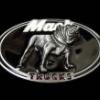
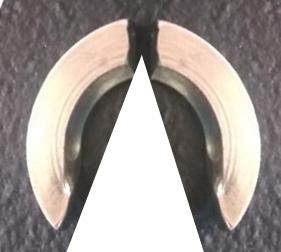

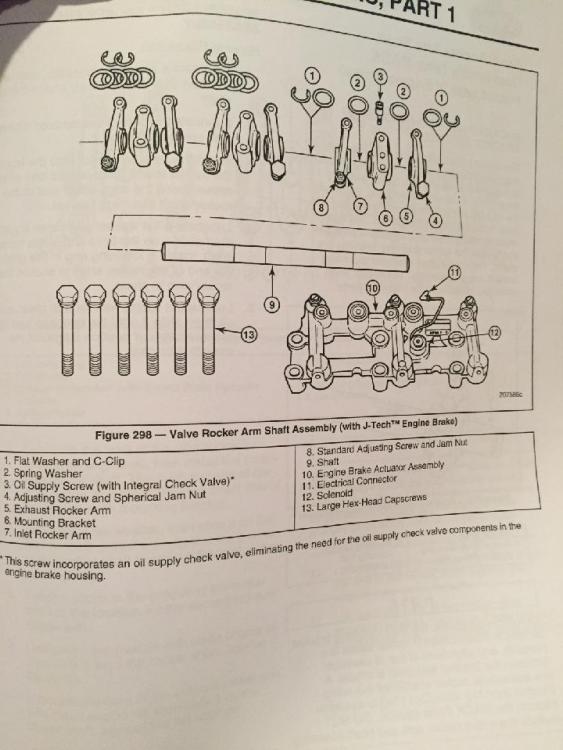
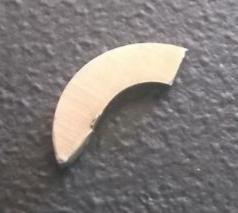
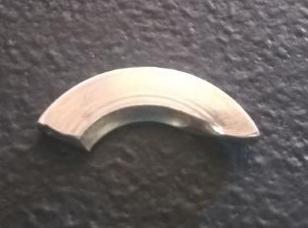

Lighting bolt and check trans light on
in Modern Mack Truck General Discussion
Posted
Good morning Joe. Mine was under warranty so it took mack and allison a couple days to figure it out. All I can tell you is they told me it was the harness from the controller to the trans. Good luck, wish I could help more